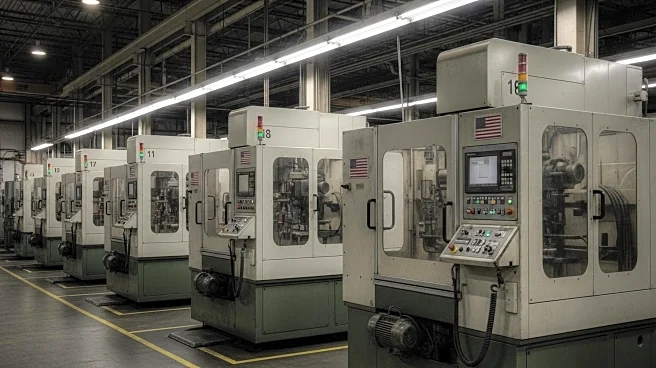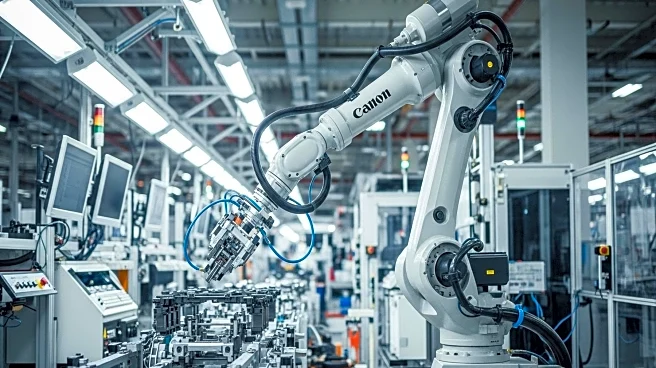What is the story about?
What's Happening?
The U.S. manufacturing sector experienced contraction in August, marking the sixth consecutive month of decline. The ISM Manufacturing Purchase Managers Index (PMI) registered at 48.7%, indicating a contraction despite a slight increase from July. New orders showed growth, but production fell, contributing to the overall contraction. Industries such as nonmetallic mineral products and textile mills reported growth, while others like wood products and transportation equipment saw declines. The sector faces challenges from tariff uncertainties and regulatory pressures.
Why It's Important?
The continued contraction in manufacturing activity highlights ongoing challenges in the sector, including tariff uncertainties and regulatory pressures. This situation affects various industries, potentially leading to reduced production and employment. The contraction impacts economic stakeholders, including manufacturers, suppliers, and workers, as they navigate a complex operating environment. The data underscores the need for strategic adjustments to mitigate risks and enhance resilience in the manufacturing sector.
What's Next?
Manufacturers may need to adapt to changing conditions by exploring new markets or adjusting production strategies. Policymakers could respond by addressing tariff uncertainties and providing support to affected industries. The sector's performance will be closely monitored, with potential implications for economic growth and employment. Stakeholders may seek collaborative solutions to enhance resilience and competitiveness in the face of ongoing challenges.
AI Generated Content
Do you find this article useful?















